Theater district nightclub 54 Below has programmed an at home series for our entertainment during this pandemic. Most events are cabarets, showcasing great talents. Others like Bright Lights, Big City revisit shows with appealing casts. This particular musical opened Off-Broadway in 1999 to mixed to negative reviews. This twentieth anniversary concert staging confirms those earlier impressions.
I imagine there was a great deal of anticipation for this show back then. The source material was Jay McInerney’s 1984 collosal hit novel of the same name. New York Theater Workshop produced the enormously successful Rent a few years earlier. Most of the same creative team was on board for this show. Paul Scott Goodman wrote the book, music and lyrics for this show. The feel is rock and pop with some bad lyrics. Very bad.
What is nice about this rendition is the cast’s vocals are strong so the songs get a chance to shine. This is a concert version so much of the book is skipped. The story is essentially about a young man who wants to be a writer and is currently working as a fact checker at a magazine. He discovers the Reagan era party world of drugs, sex and other excesses in New York City. Things go downhill but redemption comes when he sees a new reality.
The opening number is “Bright Lights, Big City.” The tone is set quickly and awkwardly. “You got any blow? / Is Stevie Wonder blind?” The writer loved this type of quip. A later song contains: “Do you have a smoke? / Can Bob Hope tell a joke?” Followed by “Bob who?” A character in the opening number is named Drug Girl. She loves “drugs and everything they do.”
The second song is “Back in the City.” Both opening tunes have two reprises as does the best song in the show, “Brother.” The lead character Jamie (Matt Doyle) has a brother named Michael (Danny Harris Kornfeld) who is struggling and being ignored after caring for the death of their mother. Both performers effectively carried that emotional story arc.
In “Sunday Morning 6AM” a dead girl last seen in Washington Square Park sings as the late night partying comes to an end. Another character named Coma Baby has a song I never need to hear again. Jamie’s wife leaves him and goes to Paris leading to the song, “I Hate the French.” The rhyme will be “stench.” He’d rather tea and Judy Densch. Not kidding. Here’s another doozy: “It isn’t that compelling checking other people’s spelling.”
Coma Baby later returns with a song called Missing. The worst rhyme of all is in the reasonably decent song “Kindness.” Jamie’s new girlfriend Vicki (Christy Altomare) rhymes “like” with “psyche,” as in human psyche but pronounces it without the second syllable. I’m currently reading Stephen Sondheim’s Finishing the Hat in which he dissects his own and other’s lyrics. I’ve learned so much about rhyming conventions that perhaps I am more attuned now. To be fair, however, those watching with me did not hear anything they enjoyed.
Without the book it was hard to make sense of some of the hallucination scenes like “Camera Wall” where dead girl comes back for a group number. This musical is very period specific. I did laugh (both with and at) the line “monstrous events are scheduled for tonight with Euro trash so nice and soft.” That felt true to the dialog of that era.
Bright Lights, Big City never went anywhere and it is obvious why. I enjoyed this short visit (1:15) and the performers who were quite good.

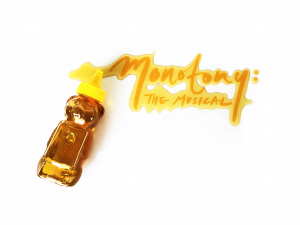

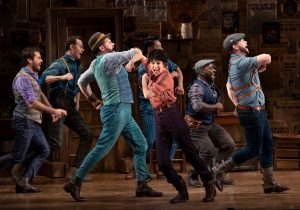

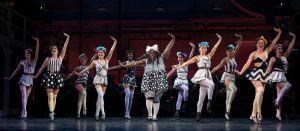
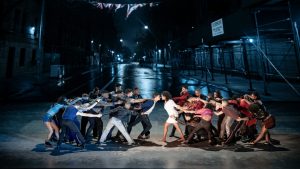
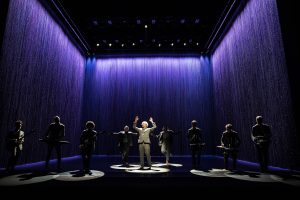


You must be logged in to post a comment.